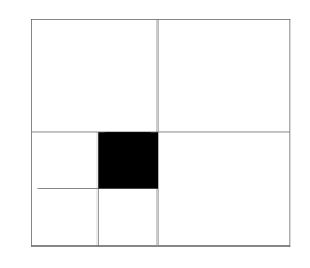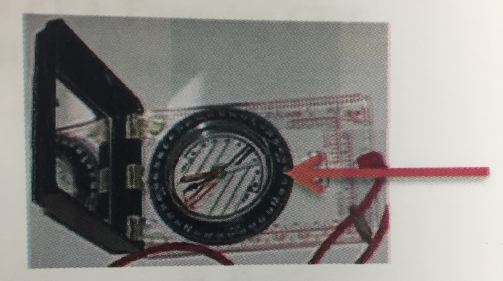Multiple Choice
Identify the
choice that best completes the statement or answers the question.
|
|
|
1.
|
The study of insects and their relationship with the forest is called:
a. | dendrology | b. | entomology | c. | hydrology | d. | pathology |
|
|
|
2.
|
A cant of wood that measures 12’’x 12’’x 40’
contains_____ board feet.
|
|
|
3.
|
A snag is a:
a. | Blocked firebreak | b. | Branch from one tree caught up in the branches
from another tree. | c. | Pinched chainsaw | d. | Standing dead tree
over 20’ |
|
|
|
4.
|
Which of the following could you use to determine the slope of a hill?
a. | Abney Level | c. | Diameter Calipers | b. | Densiometer | d. | Increment Borer |
|
|
|
5.
|
When felling a tree, the part of the cut that controls the trees’s
direction of the fall is the:
a. | Notch | b. | Limbing | c. | Bucking | d. | Backout |
|
|
|
6.
|
The definition of magnetic declination is:
a. | The point at which a compass points to the magnetic north pole. | b. | The angle of
difference between true north and magnetic north. | c. | The easterly direction is you are in a westerly
position of the agonic line. | d. | The 0º north of the
equator. |
|
|
|
7.
|
Elastomers and gels are used in fire-fighting to :
a. | Enhance to ability of water to suppress fire. | b. | Prevent soil erosion
after a wild fire. | c. | Provide long-term fire prevention.
| d. | Set back fires. |
|
|
|
8.
|
Which of the following is a conifer?
a. | Aspen | c. | Eastern Cottonwood | b. | Black Cherry | d. | Eastern Red
Cedar |
|
|
|
9.
|
What does the contour interval on a topographic map indicate?
a. | Elevation of general area. | b. | Elevation at a specific
point. | c. | Different types of contour lines represented be different colors. | d. | Difference in
elevation represented by adjoining contour lines. |
|
|
|
10.
|
What type of forest inventory is a wedge prism used in?
a. | Point sampling | c. | Double sampling | b. | Plot sampling | d. | Cluster
sampling |
|
|
|
11.
|
The specialized cells used to transport water from the tree roots to the limbs,
twigs and leaves are called _____.
a. | Cambium | b. | Phloem | c. | Xylem | d. | Pith |
|
|
|
12.
|
________ is a partial cut in an even-aged stand of trees to improve growth by
regulating density.
a. | Thinning | c. | Salvage Cut | b. | Sanitation Cut | d. | Release Cut |
|
|
|
13.
|
Which of the following trees has more than one leaflet per leaf?
a. | White Spruce | b. | Red Cedar | c. | Pecan | d. | Black
Birch |
|
|
|
14.
|
A forest soil with a pH of 3.2 would be considered_______.
a. | Alkaline | c. | Neutral | b. | Acidic | d. | None are
correct. |
|
|
|
15.
|
_______ is the language used as a basis for most scientific names of
trees.
a. | German | b. | English | c. | Latin | d. | French |
|
|
|
16.
|
Which of the following trees has an opposite leaf arrangement?
a. | Aspen | b. | Sycamore | c. | Red Maple | d. | Sweetgum |
|
|
|
17.
|
The correct quadrant reading for a 220º azimuth bearing is:
|
|
|
18.
|
What two measurements are needed to determine the site index of a tract?
a. | Age and DBH | c. | DBH and Soil Index | b. | Age and Height | d. | Height and DBH |
|
|
|
19.
|
If it 3/4 of an inch between 3 rivets on a chainsaw chain, what would the pitch
be?
|
|
|
20.
|
How long would a line need to be on a topographic map with a scale of 1:24000 to
equal a mile?
a. | 4.54 inches | b. | .55 inches | c. | 25.6 inches | d. | 2.64
inches |
|
|
|
21.
|
The debris left after logging such a limbs, tops and knockdown trees is
called?
a. | Conk | b. | Kerf | c. | Slash | d. | Stumpage |
|
|
|
22.
|
Stream direction can be determined on a topographic map by contour lines that
are:
a. | in a circular pattern. | b. | in a “V” shape. | c. | placed close
together. | d. | placed perpendicular to the map margin. |
|
|
|
23.
|
Defoliators are insects that attack the______ of the tree.
a. | Bark | b. | Buds | c. | Roots | d. | Leaves |
|
|
|
24.
|
The length of time needed to air dry or season wood depends on:
a. | Climate | c. | Wood size | b. | Method of stacking | d. | All are correct |
|
|
|
25.
|
Which of the following tools would be correct to use to measured how fast the
water is moving in a stream?
a. | Flowmeter | b. | Colorimeter | c. | pH meter | d. | Altimeter |
|
|
|
26.
|
How many acres does the shaded area on the section represent? 
|
|
|
27.
|
Select the correct legal land description for the section of land blacked out in
the picture. You may assume that it is Section 1, T19N, R20W.  a. | NW1/2, NE1/4, Section 1, T19N, R20W | b. | NE1/4, SW1/4, Section 1, T19N,
R20W | c. | Section 1, T19N, R20W, NW1/2, NE1/4 | d. | Section 1, T19N, R20W, NE1/4,
SW1/4 |
|
|
|
28.
|
A forest tract measures 2640’ wide by 5280’ long. How many acres are
in that tract?
|
|
|
29.
|
One use of a GPS is to run cruise lines in a forest. What do the letters GPS
stand for?
a. | Geosynchronous Polar Station | c. | Global Position
Site | b. | Geosynchronous Positioning System | d. | Global Positioning
System |
|
|
|
30.
|
When a fire burns in the humus layer of the soil, it is called a ________
fire.
a. | Ground | b. | Soil | c. | Crown | d. | Prescribed |
|
|
|
31.
|
An example of an insect that may be beneficial in controlling damaging insects
is a(n):
a. | Asian Longhorned Beetle | c. | Ladybug / Bird
Beetle | b. | Gypsy Moth | d. | White Pine Weevil |
|
|
|
32.
|
Which of the following forest practices is more likely to result in soil
erosion?
a. | Herbicide site-prep | c. | Selective cutting | b. | Clear cutting | d. | Hand planting
seedlings |
|
|
|
33.
|
Which of the following maple species is known as a hard maple?
a. | Boxelder | b. | Red Maple | c. | Silver Maple | d. | Sugar
Maple |
|
|
|
34.
|
Browse lines along the edge of forests are caused by:
a. | Beaver | c. | White-tail Deer | b. | Porcupine | d. | Wild Turkey |
|
|
|
35.
|
What are cant hooks used for?
a. | Rolling and positioning logs | c. | Soil sampling | b. | Tree
climbing | d. | Holding a chain
saw |
|
|
|
36.
|
What does the term “kerf” refer to?
a. | Width of cut made by saw blades | b. | Time it takes to saw completely through a
board | c. | Size of the board cut by a saw blade | d. | Protective gloves worn by a saw
operator |
|
|
|
37.
|
Which of the following terms is used to describe a smooth leaf margin?
a. | Serrate | b. | Entire | c. | Dentate | d. | Crenate |
|
|
|
38.
|
Which of the following trees have achene type fruit?
a. | Elm | b. | Sugar Maple | c. | Pecan | d. | Sycamore |
|
|
|
39.
|
The term “biological control” refers to______.
a. | Pest control using 245T Chemical. | b. | Pest control chemicals that are created in a
lab by biologists. | c. | Pest control using natural
agents. | d. | Pest control chemicals containing ammonia. |
|
|
|
40.
|
What is a stereoscope used for?
a. | Viewing microscopic insects | c. | Listening to radio
waves | b. | Interpretation of aerial photos | d. | Analyzing tree
rings |
|
|
|
41.
|
Which forest management practice creates the majority of risks to negatively
impact water quality?
a. | Chemical site preparation | c. | Tree growth
cycle | b. | Hand planting | d. | Harvesting |
|
|
|
42.
|
What does multiple-use forestry refer to?
a. | Manages the forest for today with no regard to the future. | b. | Combining two or
more management objective. | c. | Manages the forest for timber
production. | d. | Manages the forest for aesthetic qualities. |
|
|
|
43.
|
If a sample of wood had an un-dried weight of 12 ounces and its dried weight was
10 ounces, what would its moisture content be?
|
|
|
44.
|
Most conifers are evergreens. which of the following is not an evergreen?
a. | Pitch Pine | c. | Baldcypress | b. | Red Cedar | d. | Lodgepole Pine |
|
|
|
45.
|
What is the definition of bucking tree mean?
a. | Cutting a tree from its stump | b. | Removing its limbs | c. | Directing the fall
of a tree to a specific location | d. | Hauling the tree to a
loader |
|
|
|
46.
|
What is the name of the part of the hand compass that the arrow is pointing
to?  a. | Index mark | c. | Baseplate | b. | Orienting arrow | d. | Bezel |
|
|
|
47.
|
Which of the following is considered a non-capital asset?
a. | Land | b. | Chainsaw gas | c. | Skidder | d. | Timber |
|
|
|
48.
|
What part of a timber scale contract depends on the harvesting objective?
a. | Preamble | c. | Conditions of the scale | b. | Description of the
scale area | d. | Designation of
the trees to be sold |
|
|
|
49.
|
Which type of chart helps set the declination on a compass?
a. | Isogonic | b. | Latitude | c. | Longitude | d. | Agronomic |
|
|
|
50.
|
Why are herbicides used as a tool in forest management?
a. | To control the growth of the trees being grown in the wood | b. | To speed up the
growth of the trees being grown for wood | c. | To control the growth of unwanted plants
| d. | To speed up the development of the root systems of
plants |
|